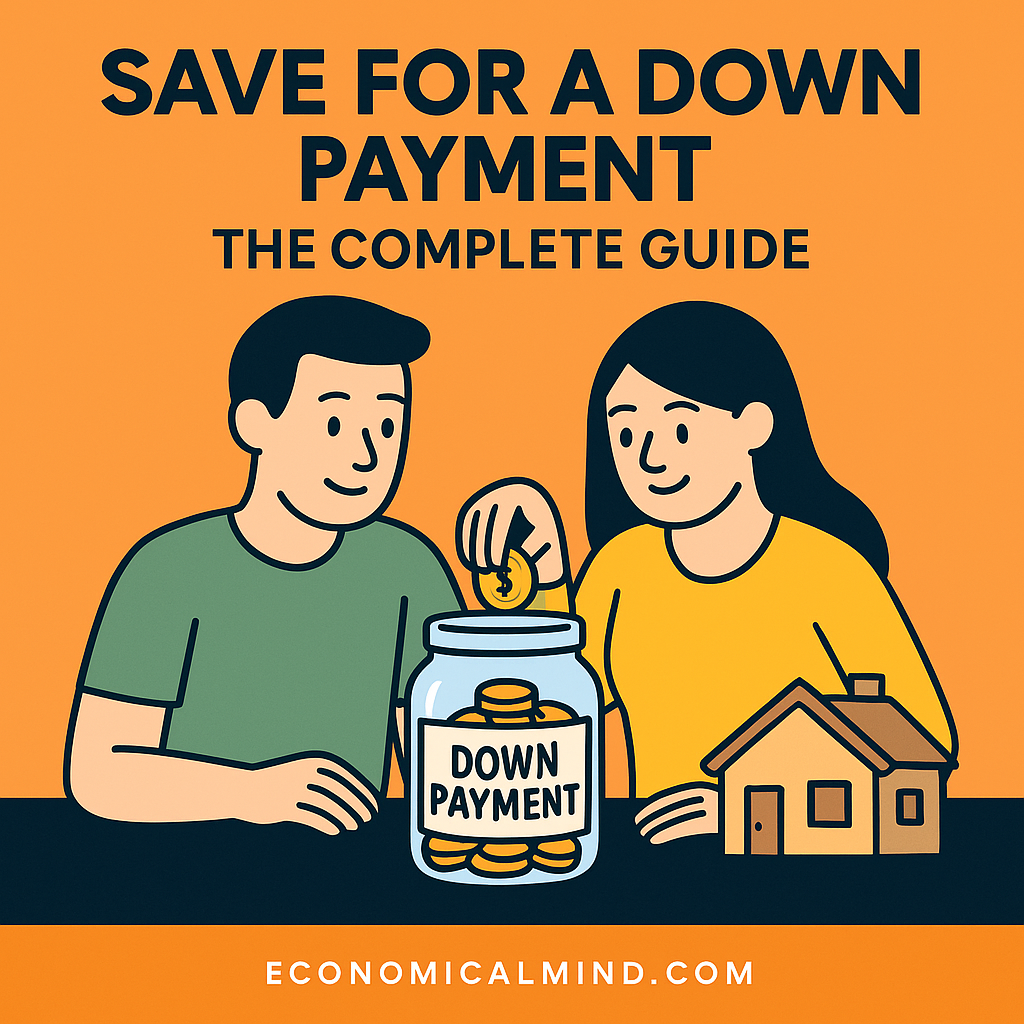
Buying a home starts long before you find the right one — it starts with saving for the down payment. Whether you’re aiming for your first home or upgrading to your next, having a clear savings plan helps turn one of life’s biggest purchases into a realistic goal.
Why a Down Payment Matters
A down payment is the amount you pay upfront when buying a home, typically 3% to 20% of the purchase price. The larger your down payment, the smaller your loan — and the better your financial position.
Example: On a $400,000 home, a 10% down payment equals $40,000. Saving more can help you secure better loan terms, lower monthly payments, and reduce the need for private mortgage insurance (PMI).
Pros of Saving a Larger Down Payment
1. Lower Monthly Payments
Putting more down means borrowing less, which keeps your monthly costs lower.
Example: A 20% down payment could save hundreds per month compared to 5%.
2. Avoid Private Mortgage Insurance (PMI)
Most lenders require PMI if you put down less than 20%.
Example: PMI can add $100–$300 per month until you reach 20% equity.
3. Lower Interest Rates
Lenders view larger down payments as lower risk, often rewarding you with better rates.
4. More Home Equity from Day One
Your money is immediately working for you, not just paying off interest.
5. Increased Buying Confidence
A healthy down payment strengthens your mortgage approval odds and makes your offers more competitive.
Cons of Waiting Too Long to Save
1. Rising Home Prices
If the market’s moving fast, prices may rise faster than your savings.
Fix: Save aggressively while watching for good buying opportunities.
2. Missed Time in the Market
Owning earlier means benefiting from appreciation and equity growth sooner.
Fix: Balance between saving and getting started when the time feels right.
3. Opportunity Cost
Money sitting in low-interest accounts grows slowly.
Fix: Use high-yield savings accounts or conservative investments for better returns.
4. Potential Lifestyle Delays
Waiting too long may delay other goals like starting a family or moving for work.
Fix: Set a clear savings timeline with milestones.
Best Practices for Saving for a Down Payment
1. Set a Clear Target
Determine your ideal home price and down payment percentage.
Example: A $350,000 home with 10% down means a $35,000 goal.
2. Open a Separate Savings Account
Keep your down payment funds away from daily spending money.
Tip: Use a high-yield savings account for safety and growth.
3. Automate Your Savings
Set up automatic transfers to build momentum without relying on willpower.
4. Cut Non-Essential Expenses
Trim subscriptions, dining out, or impulse purchases — redirect those funds to your goal.
5. Boost Income Strategically
Freelance, sell unused items, or take on a short-term side hustle to accelerate progress.
6. Apply Windfalls and Bonuses
Use tax refunds, work bonuses, or unexpected money to grow your down payment faster.
7. Explore First-Time Buyer Programs
Some government and local programs offer grants or low down payment options (3% or less).
8. Track Progress Visually
Use a tracker or spreadsheet to stay motivated — seeing your balance grow is powerful.
9. Protect Your Savings
Avoid risky investments. This money should be there when you need it.
10. Don’t Forget Closing Costs
Save an additional 2–5% of the home price for closing fees, inspections, and moving.
Key Takeaway
Saving for a down payment doesn’t have to feel overwhelming. With clear goals, consistent effort, and smart tools, you can build the foundation for homeownership faster — and more confidently — than you think.
